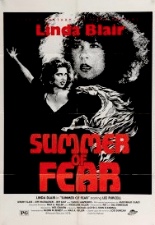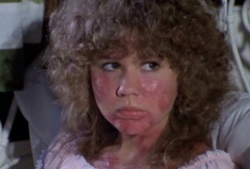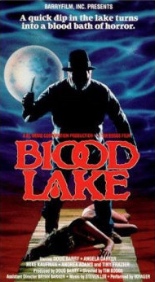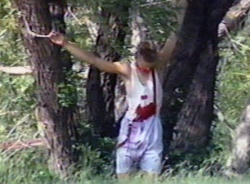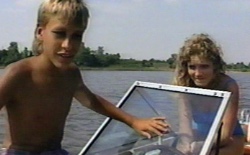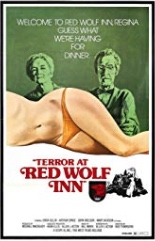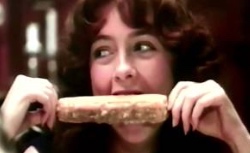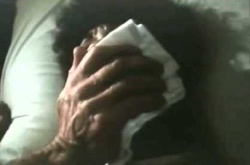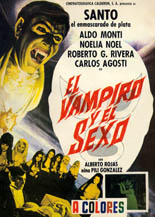
 Leave it to Mexploitation king René Cardona Sr. (Night of the Bloody Apes) to deliver the single Santo movie with something the other four dozen or so do not have: sex. It’s even in the title: El Vampiro y el Sexo.
Leave it to Mexploitation king René Cardona Sr. (Night of the Bloody Apes) to deliver the single Santo movie with something the other four dozen or so do not have: sex. It’s even in the title: El Vampiro y el Sexo.
Although a nuclear physicist by trade, Dr. Sepulveda (Carlos Agostí, Guns and Guts) dabbles in the metaphysical. And who should partner with him on such studies but that noted scholar, Santo (Santo), lookin’ sharp in a two-piece business suit and, yes, his sparkly wrestling mask. To Dr. Sepulveda’s assembled guests, Santo discusses his theory of “dematerialization,” by which people can be sent back to their previous lives, and — oh, hey, he just so happens to have built a reincarnation time machine in hopes of doing just that. He just needs a willing female to test it, because why jeopardize a dude, right?
 So off goes the doc’s daughter (Noelia Noel, Carnival of Crime) to the tail end of the 19th century, when she encountered/encounters none other than Count Dracula (Aldo Monti, The Book of Stone). Actually, he introduces himself as Alcuard; it takes her peers a hot minute to realize that’s the backward spelling of Dracula, once a professor has the outta-nowhere idea to put crayon to paper and hold it up to a mirror.
So off goes the doc’s daughter (Noelia Noel, Carnival of Crime) to the tail end of the 19th century, when she encountered/encounters none other than Count Dracula (Aldo Monti, The Book of Stone). Actually, he introduces himself as Alcuard; it takes her peers a hot minute to realize that’s the backward spelling of Dracula, once a professor has the outta-nowhere idea to put crayon to paper and hold it up to a mirror.
Meanwhile, back at the lab in present day, Santo somehow watches all this unfold on a TV, as big nerd/beta male Perico (Alberto Rojas) earns his stripes as a comic-relief sidekick by swallowing a whistle.
To address the “sexo” portion of the title, El Vampiro y el Sexo is the spicy version of the mild Santo en el Tesoro de Drácula (aka Santo in the Treasure of Dracula). Repressed since its limited theatrical release, el Sexo contains several minutes of Playboy-style nudity. Dracula clearly has a type: Russ Meyer’s. His victims, whom he feels up before biting their necks (“My teeth have inoculated your flesh!”), are so top-heavy, they’re anachronistic.
So much of so many mamacitas is on parade that for a while, you may forget you’re watching a Santo movie. When the inevitable wrestling scenes arrive, viewers may be whiplashed back into reality. It’s not your fault. —Rod Lott



